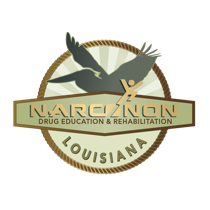Hidden Highs

The abuse of alternative substances such as kratom, kava, synthetic cannabis, and tianeptine has grown considerably in recent years. One of the biggest reasons people use these substances is because those drugs can evade detection in conventional drug tests. So they can be taken without legal or professional intervention and to some degree it is perceived these substances are safe, when in all actuality they are some of the most dangerous chemicals one can put into their body.
Drug testing is quite common across the job market, sports teams, and legal systems. These tests, however, usually screen for traditional substances like marijuana, cocaine, opiates, etc. Substances like kratom, kava, K2, and tianeptine fall outside of what these panels test for. For individuals who are looking for ways to get high or manage physical or emotional pain, these substances provide a dangerous incentive to use drugs without consequence. This is used as a powerful motivator for someone to seek an altered mind state with either natural substances or research chemicals.
Here are brief explanations of each substance:
Kratom
Kratom is indigenous to Southeast Asia and derives from the leaves of the Mitragyna Speciosa tree. It is marketed as a natural remedy for pain and anxiety as well as a tool to help opioid withdrawal symptoms. Kratom interacts with opioid receptors in the brain which produces effects similar to opiates. This substance can create feelings of euphoria, increased energy, or sedation depending on the dose. However, kratom itself can be very addictive when taken for extended periods of time. Kratom has also been linked to several severe side effects such as liver damage, seizures, and gastrointestinal issues.
Kava
Kava is made from the root of the kava plant, which is a traditional beverage in Pacific Island cultures. It has been used for its calming and anxiolytic (anxiety-reducing) effects and in recent years has been touted as a natural benzodiazepine. Although kava is considered less dangerous than pharmaceutical medication, it still has a harsh effect on the body when taken for lengthy periods. It can cause impaired cognitive function, dependency, and liver damage. Its undetectable nature has led many who have emotional stress to self-medicate and overuse kava. This misuse can mask a much deeper mental health issue and in some cases, delay appropriate treatment.
K2 (Synthetic Cannabinoids)
K2, also known as spice, is a synthetic cannabinoid that was designed to mimic the effects of THC. THC is an active ingredient in marijuana. It is often sold as an herbal incense or potpourri and marketed as a legal and undetectable alternative to cannabis. The dangerous aspect is that its chemical composition is regularly changed to evade legal restrictions, making it very unpredictable and equally dangerous. People who use K2 report extreme effects ranging from euphoria to hallucinations to severe psychosis. This substance has been linked to many emergency room visits for a wide range of medical emergencies. It is often reported the patients coming in are experiencing seizures, hallucinations, and in extreme cases, death.
Tianeptine
Tianeptine is an atypical antidepressant that was made in France during the 1960s. In low doses, it is used for the treatment of depression and anxiety, while in higher doses it produces euphoria and sedation. It is most commonly sold as a dietary supplement in gas stations and online which has given it the nickname “gas station heroin.” Since it is not approved for medical use in most countries, the drug escapes regulation and testing protocols. This has garnered many people to misuse the substance in search of a legal high. Tianeptine carries an extremely elevated risk of dependency with terrible withdrawal symptoms and a potential for overdose.
The abuse of these substances highlights the gaps that exist in drug screenings, legalization, and public health policies. While these substances do not show up on standard drug tests, more and more people flock to them. The dangers associated with these drugs can be more impactful to one’s health and state of mind than conventional drugs. Misuse can lead to physical health complications, mental health deterioration, and life-threatening consequences. To mitigate the consumption of these substances we need stricter regulation and reduced accessibility. Legal catch-up is constantly being played because as soon as one substance is banned, there is another one waiting in line to take its place. Raising awareness and providing accessible and nonjudgmental treatment options are crucial to help those suffering from substance abuse.


